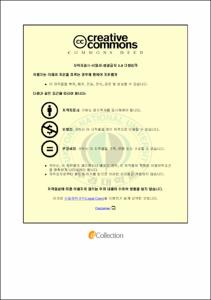2011 개정 교육과정에 따른 중학교 1학년 영어교과서 문법 분석
- Alternative Title
- An Analysis of Grammar in First Grade Middle School English Textbooks
- Abstract
- Abstract
First year middle school English textbooks have been published with revised content in 2013. The purpose of this study is to analyze first year middle school English textbooks, focusing on how well and how often grammar and its activities are presented in communicative contexts. For this purpose, three textbooks were chosen randomly and analyzed.
This study analyzed activities in the grammar sections of the textbooks based on second language acquisition theories. This study also examined how often target grammar sentences were presented. These sentences were analyzed in terms of their location in the textbook: grammar from a unit was looked at relative to what was taught before(before learning), what was currently being taught (while learning), and what was taught afterwards (after learning).
The results of this analysis are as follows. According to the first analysis, all textbooks presented example sentences in each unit with noticing and input enhancement techniques for the language forms set forth by the national curriculum. Only one out of three textbooks had all example sentences using meaningful context and showing use of the target language forms in cartoons. Secondly, the study found 44% of grammar activities were form-based activities, and 52% of grammar activities were meaning-based activities. Only 4% of grammar activities were communicative-use activities. The third finding was related to one-way activities and interactive activities in the grammar sections. One-way activities were shown in 80% of the textbooks and interactive activities were shown in 20% of the textbooks. In interactive activities, most activities were presented as a short talk with partners or a teacher. These are not effective enough for learners to be able to improve communicative competence. The final result showed that all textbooks consisted of 78% integrated skill activities. However, most integrated skill activities focused on reading and writing skills to assist in learning grammar. That is to say, it was found that most grammar activities consisted of individual structural language exercises.
From the results of target grammar presentation frequency, 5% of target grammar sentences were presented in the before learning section, while 95% were presented in while learning and after learning sections. Furthermore, the target grammar sentences were not presented consistently and evenly in each unit. The study showed that the frequency of the target grammar sentences was related to the communicative function and theme of a unit, and not the recycling of language in subsequent units. Unit order played minor role in target language presentation .
From the results above, the researcher suggests the following. First, more example sentences with meaningful context in communicative situations should be presented. In addition, for low-level learners, the explicit explanation of grammar should be provided in an appendix or a workbook. Secondly, more varied grammar activities with communicative uses should be presented to improve fluent and accurate communicative competence. Lastly, teachers should study and develop various activities using previously learned grammar in order for students to consistently use grammar in a communicative way.
- Issued Date
- 2013
- Awarded Date
- 2013. 8
- Type
- Dissertation
- Publisher
- 부경대학교
- Affiliation
- 교육대학원
- Department
- 교육대학원 영어교육전공
- Advisor
- 오준일
- Table Of Contents
- 목 차
ABSTRACT ………………………………………………………………………ⅰ
Ⅰ. 서 론 ………………………………………………………1
1.1 연구의 필요성 및 목적 ……………………………………………1
1.2 연구 과제 ……………………………………………………………3
1.3 연구의 제한점 ………………………………………………………3
Ⅱ. 이론적 배경 ………………………………………………4
2.1 제2언어습득가설………………………………………………4
2.2 의사소통능력과 문법의 필요성…………………………………6
2.3 형태초점 의사소통 교수법 ………………………………………9
2.4 문법 활동의 정의………………………………………………13
2.5 선행 연구 분석 ………………………………………………14
Ⅲ. 연구 내용 및 방법 ………………………………………17
3.1 분석대상 ……………………………………………………………17
3.2 분석영역 ……………………………………………………………18
3.2.1 교과서 단원구성 및 문법 제시 위치………………………18
3.2.2 교과서별 문법 항목 …………………………………………20
3.2.3 교과서별 문법 활동 수 ………………………………………22
3.3 분석기준…………………………………………………………23
3.3.1 문법 활동 분석 기준…………………………………………23
3.3.2 목표 문법 항목 제시 빈도 분석 기준………………………32
3.4 자료 수집 및 분석 방법 ……………………………………33
Ⅳ. 결과 및 논의 ……………………………………………34
4.1 문법 활동 분석………………………………………………34
4.1.1 문법 항목 제시 방법 분석 ……………………………………34
4.1.2 문법 연습 활동 유형 분석 ……………………………………35
4.1.3 의사소통연습 분석………………………………………………38
4.1.4 언어기능 연계 분석 ………………………………………………40
4.2 목표 문법 항목 제시 빈도 분석 …………………………………42
4.2.1 단원별 목표 문법 항목 제시 빈도 분석 ………………………42
4.2.2 교과서별 4, 5, 6단원 목표 문법 항목 제시 빈도 분석 ………46
V. 결론 및 제언 ……………………………………………50
5.1 결론 ………………………………………………………………………50
5.2 제언 ………………………………………………………………………52
참고문헌 …………………………………………………………………………54
- Degree
- Master
- Files in This Item:
-
-
Download
 2011 개정 교육과정에 따른 중학교 1학년 영어교과서 문법 분석.pdf
기타 데이터 / 2.74 MB / Adobe PDF
2011 개정 교육과정에 따른 중학교 1학년 영어교과서 문법 분석.pdf
기타 데이터 / 2.74 MB / Adobe PDF
-
Items in Repository are protected by copyright, with all rights reserved, unless otherwise indicated.